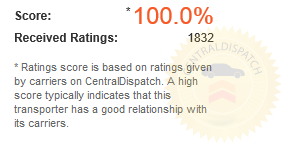How to react to wildlife in the middle of the road in Alaska
How to maximize visibility in snowy conditions

How to react to wildlife in the middle of the road in Alaska
Encountering wildlife in the middle of the road in Alaska is common, given the vast and untamed wilderness that characterizes the state. The key to navigating these situations safely lies in a combination of caution, respect, and a deep understanding of the region’s animals.
First and foremost, it is crucial to remain calm when faced with wildlife on the road. Sudden movements or loud noises can startle the animals, potentially leading to unpredictable behavior. Maintaining a composed demeanor is paramount in Alaska, where moose, bears, caribou, and other large mammals roam freely. Take your foot off the accelerator and slow down gradually, giving the wildlife ample time to assess the situation and move on.
Respecting the natural instincts and space of the animals is essential. Maintain a safe distance, never attempt to approach or feed them, and avoid any sudden or aggressive maneuvers. For large herbivores like moose, it’s crucial to give them plenty of space to graze or cross the road at their own pace. Predatory animals like bears may require even more caution. If you spot cubs, be aware that a protective mother may be nearby, and it’s advisable to retreat slowly without making direct eye contact.
Turning off your vehicle’s engine and dimming your lights can contribute to a less intimidating environment for wildlife. This is especially important during the nighttime encounters when bright headlights can disorient and disturb the animals. By minimizing your impact and allowing the creatures to continue their natural behaviors undisturbed, you contribute to the delicate balance of Alaska’s ecosystems.
In some situations, waiting patiently for the animals to clear the road may be necessary. Remember that you are a guest in their habitat, and the inconvenience of a delayed journey is a small price to pay for sharing the road with these magnificent creatures. Embracing a mindset of coexistence and understanding is not only a matter of safety but also a way to foster a harmonious relationship between humans and wildlife in the rugged landscapes of Alaska.
How to maximize visibility in snowy conditions
Ensuring maximum visibility is crucial for safe driving and overall well-being in snowy conditions. One of the primary considerations is maintaining a clean and clear windshield. Regularly check and replace windshield wipers to ensure they are in optimal condition. Snow and ice accumulation can hinder visibility, so using a windshield washer fluid with antifreeze properties is essential to prevent freezing. Keep the windshield and other windows clear of snow and ice before embarking on a journey. Using a soft brush or scraper, carefully remove accumulated snow, not scratching the glass surfaces.
Proper lighting is another key factor in maximizing visibility during snowy weather. Ensure that all exterior lights, including headlights, brake lights, and turn signals, are functional and free from snow or ice buildup. Regularly clean these lights to maintain their effectiveness. In heavy snowfall or low visibility conditions, use fog lights to enhance visibility without causing glare for oncoming traffic. Adapting your driving speed to the conditions is important, ensuring you have enough time to react to any obstacles or changes in the road.
Maintaining adequate tire traction is crucial in snowy conditions. Consider using winter tires designed to provide a better grip on snow and ice. Check tire pressure regularly, as low pressure can reduce traction. Properly inflated tires contribute to better vehicle control and handling. Additionally, ensure the tires have sufficient tread depth to effectively navigate through snow-covered roads.
A clean and well-maintained vehicle is more visible in snowy conditions. Remove snow from the roof, hood, and trunk to prevent it from sliding onto the windshield or obstructing the view of other drivers. Ensure your vehicle’s exterior lights, including headlights, taillights, and turn signals, are clean and functioning correctly. This enhances your visibility and helps other drivers see your vehicle.
Consider using reflective markers or strips on your vehicle in extreme snowy conditions to increase visibility. These reflective elements can make your vehicle more noticeable, especially during low-light or heavy snowfall. Overall, you can maximize safety and minimize risks when driving in snowy conditions by prioritizing regular maintenance, adapting your driving behavior, and implementing visibility-enhancing measures.


